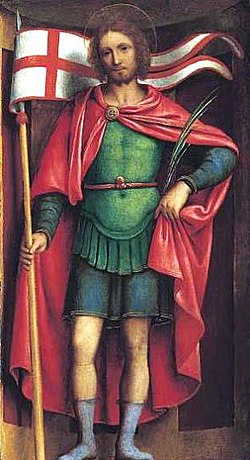Saint Alexander of Bergamo | |
|---|---|
 Alexander of Bergamo, Bernardino Luini, ca. 1525. | |
| Born | III century |
| Died | 26 August 303 Bergamo |
| Venerated in | Roman Catholic Church Eastern Orthodox Church |
| Major shrine | Relics rest in chapel in ducal castle of Pescolanciano |
| Feast | August 26 (Roman Catholic Church), September 22 (Orthodox Church) |
| Attributes | Depicted as a soldier; military standard bearing white lily |
| Patronage | various comuni in Italy (see Patronage) |
| Military career | |
| Died | 26 August 303 |
| Cause of death | Christian martyr |
| Allegiance | Roman empire |
| Branch | Roman army |
| Rank | Vexillifer |
| Unit | Legio Tebea |
Alexander of Bergamo (died c. 303) is the patron saint of Bergamo, as well as Capriate San Gervasio and Cervignano d'Adda. Alexander may have been a Roman soldier or resident of Bergamo who was tortured and killed for not renouncing his Christian faith. [1] Details of his life are uncertain, but subsequent Christian stories consider him a centurion of the Theban Legion commanded by Maurice.
